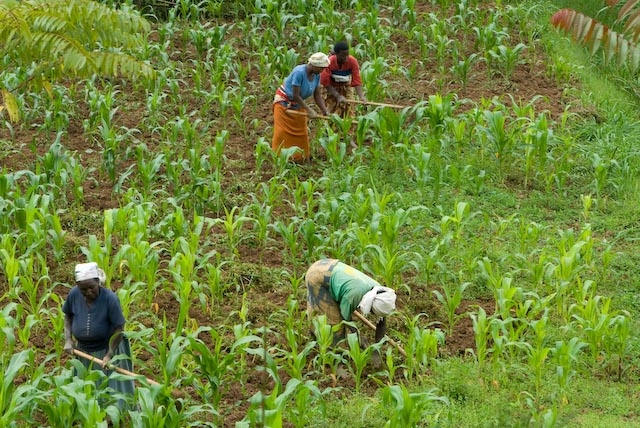Photo by Deborah Espinosa
One billion people around the world suffer from chronic hunger. Ironically, most are engaged in agriculture. In fact, 75% of the world’s poorest people live in rural areas where land is the most important source of nutrition, income, wealth, power, and status. We cannot make effective headway on the twin problems of world hunger and poverty without addressing the structural problems of agriculture and of rights to land.
Fortunately, the often neglected agricultural sector appears to be receiving increasing attention at World Economic Forum (WEF) events. This week at Davos, the WEF’s initiative on a New Vision for Agriculture will be further shaped. The initiative works to accelerate sustainable agricultural growth through market-based actions and multi-stakeholder collaboration. It is led by 17 companies working in the agricultural sector and also engages governments, international organizations, civil society, and experts.
It is not clear, however, that the leaders of the New Vision for Agriculture are paying sufficient attention to issues of land rights, and that could be perilous – for businesses, countries, and poor rural communities. Global agriculture has been experiencing a “land rush” in recent years. Commodity price volatility, worries about food security, growing human and environmental pressures and other trends are increasing the large-scale acquisition of – or investment in – farmland located in developing countries, particularly Africa, but also in Asia, Latin America, and Eastern Europe. Experts project this demand will continue for at least two decades.
These increased investments in farmland and developing country agriculture by corporate actors (some foreign, although most domestic) present both substantial economic and social opportunity and substantial risk. This new investor interest could be an opportunity to combine outside capital, technology, and market access with poor farmers’ land and labor to improve rural livelihoods, advance broader development goals and earn financial returns – a “win-win-win”.
A review of such farmland investments over the past several decades finds such examples. Unfortunately, a recent compilation of official government data and case studies by the World Bank, Rising Global Interest in Farmland, points to many problems and highlights the dangers that need to be addressed if the potential benefits are to be realized. Chief among the “failure factors” is a failure by countries to define, respect and protect land property rights. Many past investment projects also not only frequently failed to provide promised benefits, but actually resulted in conflict, environmental damage, and displacement that left a legacy of inequality and resource degradation. So, will the new “farmland rush” by investors learn the positive and negative lessons of the past?
The evidence is clear. Shortcomings in the legal and institutional framework for land rights are likely to doom investors, broader economic and social goals, and the poor rural citizens directly affected by such investments. It does not have to be that way. A true multi-stakeholder approach to addressing the legal and institutional framework for land rights and other public sector measures can help ensure win-win-win solutions. Are the leaders of the New Vision for Agriculture paying attention?

